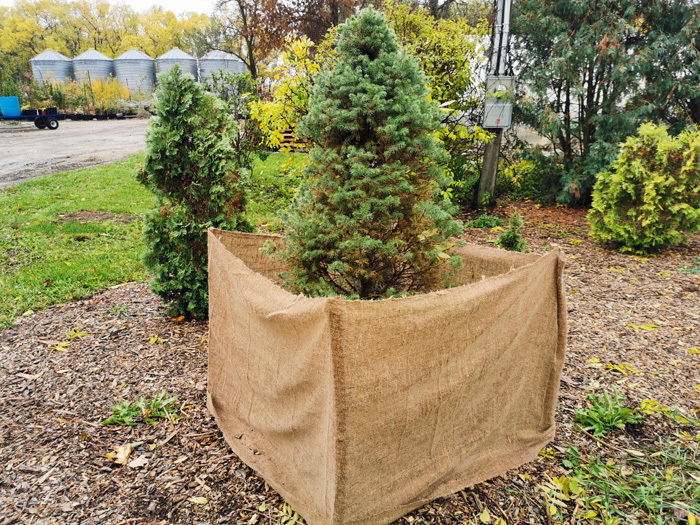Annual or perennial, there is a single determining factor that divides all plants into these two categories. Can it survive the winter?
There are thousands of different varieties and species out there and they will have different results in different climates. Even perennials that are tried and true for Manitoba can be damaged in a difficult winter. Trees will have tip die-back, evergreens will sunburn, and roots will freeze. What can be done to prevent this?
One of the most crucial factors of preparing your plants for winter is proper watering. There is a popular idea that you need to water your trees and shrubs heavily in fall just before freezing. This is not necessarily true for every tree and with the wet fall we have had this year we will need to think twice.
Evergreens will benefit from adequate and consistent watering from spring thaw until winter frost. Soaking them heavily in Fall will not be sufficient and cannot undo the damage caused by a summer of dehydration. Instead continue watering every seven to ten days depending on the weather. Continue doing this until heavy frost begins. This will ensure the plant is well hydrated and ready for a long hibernation. Spreading wood chip mulch around the base will help ensure the moisture remains in the areas longer, will prevent weeds from stealing it away, and will help prevent frost damage to the roots.
Autumn Blaze Maple on the other hand requires an entirely different approach. Some trees like Autumn Blaze are accustomed to longer growing seasons and need to be “grown hard”. This essentially means planting in a high, well drained area and letting grass grow close to the trunk. This will deprive the tree of some of its moisture, therefore “starving” the tree into an early hibernation. This method is only recommended on a few select trees that need the push and could be harmful if used on the wrong varieties.
Protecting young trees trunks with a tree wrap is another vital step. It is a plastic tube about 3′ long that can be wrapped around the trunk. This will prevent rodents from eating the tender young bark and protect the tree against frost cracking and sun scald. Placing a cage of stucco wire around your plant will repel rabbits and deer at the same time.
Burlap wrapping is another thing that can help protect plants from winter sun damage. It is especially helpful with young evergreens. The recommended method is putting four wooden posts in the ground and stapling burlap fabric to the post about four feet high. Make sure the fabric is an inch out of reach of the branches. This will be tall enough to block the sunlight reflecting off the snow, while still giving the tree enough room to breathe. If the tree is wrapped directly it will serve the same purpose but the foliage will suffer. Evergreen often begin browning when they are in direct contact with another tree or fabric. Therefore making a fence is definitely recommended.
The shrubs need protecting too, often times more than the trees. Having adequate snow cover is very important for all perennials and many small shrubs too. Branches that are exposed above the snow line will often freeze back where as branches that are covered are insulated from the cold wind and frost. Something to remember next time you are shoveling the sidewalk: aim for the bushes. Pruning can be done in the Fall to prevent branches from freezing, or in Spring to repair winter damage.
Winter will always come and go. Thankfully there are many ways that we can prepare for the worst… because in Manitoba it usually happens.




